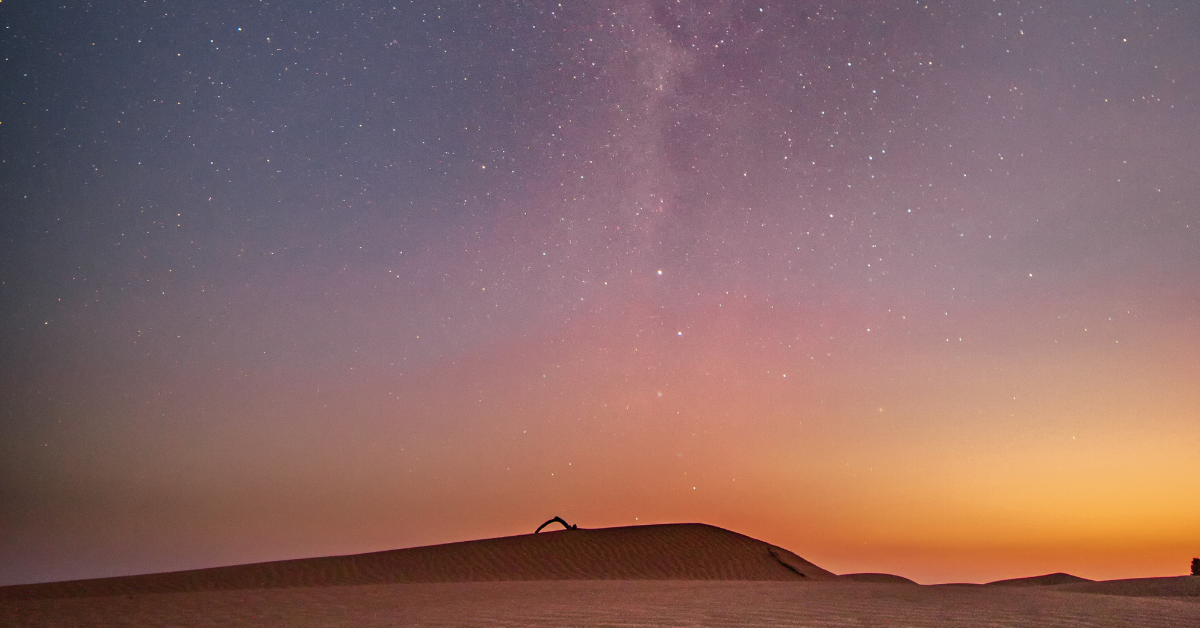The Tottori Sand Dunes are widely known for their grand sandy landscapes during the day, but at night, the scene transforms into a natural planetarium under a sky full of stars. Japanese visitors often describe the experience as “unforgettable” and emphasize the deep sense of peace they feel. For foreign travelers, understanding these impressions provides a new way to enjoy the dunes, not only as a tourist site but also as a place of spiritual and cultural significance.
- Features and Appeal of the Starry Sky at Tottori Sand Dunes
- Common Impressions of Japanese Travelers
- Seasonal Highlights and Practical Tips
- Connection Between Japanese Culture and Stargazing
- Recommended Experiences for Foreign Visitors
- List of Constellations and Directions
- Real-Life Stories from Visitors
- Conclusion
Features and Appeal of the Starry Sky at Tottori Sand Dunes
The Tottori Sand Dunes are the largest in Japan, stretching about 16 kilometers east to west and 2 kilometers north to south. During the day the dunes are crowded with tourists, but once the sun sets, the area becomes enveloped in silence and darkness.
In cities, starlight is drowned out by streetlights and buildings, but at the Tottori Sand Dunes you can see the Milky Way with the naked eye. The starlight reflects off the white sand, so the contours of the dunes faintly glow even at night, creating a scene that is difficult to find elsewhere.
Many Japanese visitors describe the experience as “feeling like being pulled into space,” expressing how overwhelming the number and brightness of the stars can be.
Common Impressions of Japanese Travelers
| Type of Impression | Words Commonly Used | Reasons |
|---|---|---|
| Awe | “A memory for life,” “Just like a movie” | Overwhelmed by the number and spread of stars |
| Healing | “My heart feels cleansed,” “City stress disappeared” | Surrounded by silence and darkness |
| Surprise | “I never thought I could see such stars on sand dunes” | Landscape changes dramatically from day to night |
| Nostalgia | “Reminds me of childhood nights in the countryside” | Connection to rural childhood memories |
Seasonal Highlights and Practical Tips
The starry sky of Tottori Sand Dunes can be enjoyed all year round, but the constellations change by season.
| Season | Stars and Features | Visitors’ Comments |
|---|---|---|
| Spring | Big Dipper is visible | “Comfortable temperature for stargazing” |
| Summer | Milky Way and Summer Triangle | “Saw many shooting stars” |
| Autumn | Perseid meteor shower | “Stars sparkled in the crisp air” |
| Winter | Orion and Winter Triangle | “Stars felt brighter and closer” |
However, the dunes have a large difference in temperature between day and night, and it can be unexpectedly cold even in summer. Japanese travelers often remark, “The night wind was much stronger than I expected.” For a safe and enjoyable visit, bringing warm clothing and comfortable shoes is essential.
Connection Between Japanese Culture and Stargazing
Japan has a long tradition of stories and festivals related to stars. The Tanabata legend of the Weaver Princess and Cowherd, as well as agricultural calendars based on constellations, show how deeply stargazing is tied to Japanese culture.
This cultural background explains why Japanese travelers often feel emotional when gazing at the stars in Tottori. For example, many say, “Seeing the Milky Way with the naked eye reminded me of Tanabata nights in my childhood.” For foreign visitors, understanding this cultural connection can make the experience even more meaningful.
Recommended Experiences for Foreign Visitors
| Activity | Features | Japanese Feedback |
|---|---|---|
| Access | 20 minutes by bus from Tottori Station | “Much easier to reach than expected” |
| Night Tours | Guides explain constellations | “The explanations were easy to understand and moving” |
| Photography | Stars and sand dunes together | “The photos looked amazing on social media” |
For foreign travelers, this is not just sightseeing, but a cultural and natural experience combined.
List of Constellations and Directions
| Constellation | Best Season | Direction | Features |
|---|---|---|---|
| Orion | Winter | South | Three bright stars in a row |
| Big Dipper | Spring | North | Guide to finding the North Star |
| Summer Triangle | Summer | East to South | Often seen with the Milky Way |
| Cassiopeia | Autumn | North | Recognizable “W” shape |
Depending on when you visit, you can enjoy different aspects of the night sky.
Real-Life Stories from Visitors
A Japanese couple once lay down on the dunes to watch the stars and said it felt “like floating in the universe.” Another traveler saw more than ten shooting stars in one night and laughed, saying “I didn’t have time to make a wish.”
Such personal stories help foreign visitors imagine what they will experience. Many Japanese emphasize, “I want to come back again,” showing that the attraction of the dunes is not limited to a single visit.
Conclusion
For Japanese travelers, the starry sky of Tottori Sand Dunes offers a place to experience extraordinary beauty unavailable in the city. The overwhelming number of stars, their brilliance, and the silence surrounding them leave a deep impression.
For foreign travelers as well, the combination of vast sand landscapes and a sky full of stars is a rare experience. By enjoying the night in addition to the daytime scenery, you will truly understand the unique appeal of the dunes. Including stargazing in your trip will surely create unforgettable memories.






